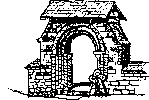Mitcham
Tudor & Stuart Mitcham
After the dissolution of the monasteries in 1538 the Mitcham estates held by the priories of Southwark and Merton went into the hands of lay landowners. The manor of Ravensbury was already privately owned, but Vauxhall remained in the hands of the Church with the Dean and Chapter of Canterbury continuing as lords of the manor over a considerable part of central Mitcham, including the Lower Green.
Upper Mitcham and Western Road
Upper Mitcham and Western Road, the final volume in the Mitcham Histories series, is concerned with a relatively small area of Mitcham, and yet one of the most fascinating, with evidence of continuity over 2000 years. Archaeology indicates a farming community here well before the Roman period. The place name is early Saxon, and eighth-century title deeds survive. A pattern of land tenure had evolved long before the Norman conquest, and the influence of medieval strip holdings can be detected in Victorian street patterns. The last medieval farmhouse was not demolished until the late 19th century. By the reign of Elizabeth government officials and city merchants saw Mitcham as an attractive place to live, and one of their mansions can still be seen. New inns and beer houses attest to increasing traffic and industrialisation proceeded apace. By the early Victorian period the character of Upper Mitcham had changed dramatically, with a gas works, a large workhouse and orphanage, and workers’ cottages crammed onto the smallest of vacant lots. Virtually all have now been swept away, to be replaced by new housing estates and light industry. One major feature of old Mitcham remains, the tract of common land known as Figgs Marsh, which separates Upper Mitcham from South London suburbs to the north, and is now in municipal hands, managed as public open space.
Urban Mitcham
In the first decade of the 20th century the population of Mitcham doubled, reaching 29,606 in 1911. The Great War of 1914–1918 increased industrial occupation of parts of Mitcham, and the new Urban District Council supported the movement to provide homes for heroes as soon as the Armistice was declared. Large estates of municipal cottage housing were built in the early 1920s, notably on the Bordergate Estate to the west of Figges Marsh. Local benefactors contributed generously towards the development of public buildings.
Victorian Mitcham
Whereas Wimbledon and Croydon received a stimulus to suburban expansion in the early Victorian period from railways, Mitcham did not, and instead it attracted somewhat offensive industries. Paint, varnish and linoleum manufactories, employing extremely noxious processes, were attracted to the district west of the Fair Green, and a gasworks was established amongst the lavender fields off Western Road in 1849. Even the distillation of essential oils could be overpowering in the vicinity of the physic farms.
Willow Lane and Beddington Corner
The history of what became the Willow Lane industrial estate in the 20th century can be traced back to the Romano-British period, but it was from the late 16th century that industry was attracted to this part of Mitcham, where the Wandle was a source of pure water and, above all, power. In their time textile bleaching and printing, the production of dyes, leather manufacture, copper and flour milling were to be found here, but all have now gone, to be replaced in the last century by a diversity of businesses. During the Victorian era, before development had commenced, market gardening and watercress growing were also major activities, supplying the London markets. This book is an attempt to bring together, as a coherent narrative, elements in the complex history of what still remains for many a little known corner of Mitcham.
 MERTON HISTORICAL SOCIETY
MERTON HISTORICAL SOCIETY